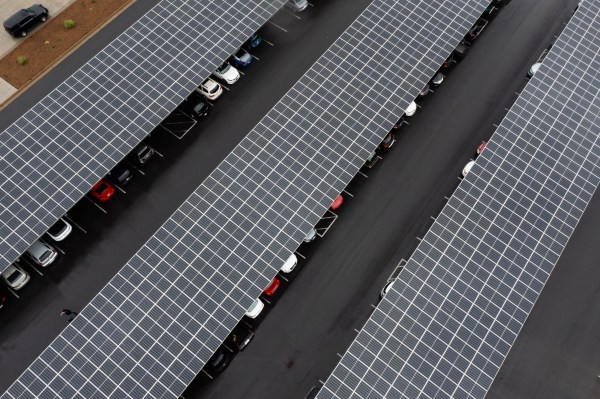The Inflation Reduction Act has clearly kickstarted investment in U.S. clean energy manufacturing. Last year, automakers and battery manufacturers announced that they’d spend tens of billions of dollars to ramp up EV production in the U.S. Now it’s solar’s turn.
Today, Korean solar manufacturer Hanwha Qcells announced that it’ll spend $2.5 billion to build a new plant in Georgia and expand an existing one.
The new plant will crank out 3.3 gigawatts of solar panels annually. That’s enough to supply nearly a fifth of current U.S. demand. Expansion at the other plant will add another 2 gigawatts of capacity. When completed, Qcells’ Georgia facilities will employ 2,500 people and will be capable of making 8.4 gigawatts of solar panels, cementing the Peach State’s status as a leader in solar manufacturing.
Qcells’ new campus won’t just be a final assembly plant, either. It will handle just about everything, from turning polysilicon into ingots, slicing ingots into wafters, turning wafers into cells and packing cells into panels. It’s a level of vertical integration that is seldom seen in the U.S.
The new plant might bring to mind other failed domestic solar endeavors, like the vertically integrated Evergreen Solar or the infamously innovative Solyndra. Both went bankrupt in 2011 and have become cautionary tales about the purported pitfalls of clean energy manufacturing in the U.S.
But upon closer inspection, these new plants — and the market in which they’re competing — are very different from those Great Recession failures.
For starters, Hanwha Qcells isn’t doing anything groundbreaking. It currently runs gigawatt-scale manufacturing facilities in South Korea and Georgia, not far from where its new plant will sit. The technology behind the solar panels and their manufacture is far from exotic. It’s nothing at all like Solyndra’s round panels, which were innovative but costly to produce and very different from Evergreen’s “string ribbon” technique that minimized waste but created non-standard cells that never really caught on.
Then there’s the solar market here in the U.S., which is leaps and bounds bigger than it was a decade ago. Last year, over 18 gigawatts of solar capacity were installed, according to the Wood Mackenzie and the Solar Energy Industries Association, 10 times larger than in 2011 when bankruptcies started sweeping the sector. Plus, a shortage of panels last year means that there’s plenty of pent-up demand.
The incentives are different this time around, too. More than a decade ago, the Obama administration was trying to kick-start the nascent industry. It had the potential to supply cheap power, displacing imported oil and gas, while creating a significant number of domestic manufacturing jobs. At the time, Chinese suppliers were competitive but high polysilicon prices lent an advantage to companies like Solyndra, which used a totally different type of solar material.
To give domestic competitors a leg up on lower-cost Chinese manufacturers, the Department of Energy ran a loan guarantee program that helped Solyndra and others build factories. But when polysilicon prices fell and competitors’ panels became cheaper, Solyndra’s chances of success dimmed significantly.
Today, federal incentives are multifaceted. On the demand side, the Inflation Reduction Act has extended tax credits for solar installations through 2032. On the supply side, the same law provides investment tax credits and production tax credits that incentivize onshoring as many links in the supply chain as possible. They’re substantial enough to cover nearly half the cost of production, according to Canary Media.
Will it be enough to stymie competition from China? That remains to be seen. But clearly, the decision-makers at Hanwha think so. They’ve been in this industry long enough to know just how cutthroat it is. If they’re betting on the U.S., then they must be pretty confident that the demand will be there and the supply chain will mature. That wasn’t necessarily the case a year ago or even this summer. What a difference a single law can make.
